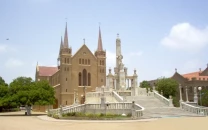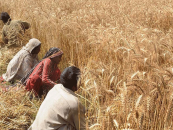Beware of dengue, even if the count is less this year
Around 345 dengue cases, all in the primary stages, are reported in government hospitals in Karachi and Hyderabad.

The number is drastically lower than the approximate 2,500 cases reported last year, but doctors believe that this figure does not provide the actual picture.
Joint Executive Director of Jinnah Postgraduate Medical Centre (JPMC) and emergency department incharge Dr Seemin Jamali said that the number of dengue patients is rising. In fact, the number is possibly under-reported since a majority of patients are living in relief camps, she said.
“The floods did not bring dengue mosquitoes to Karachi,” said Dr Tahir Sultan Shamsi, a consultant haematologist at the National Institute of Blood Diseases, adding that “they only have a range of up to 10 kilometres”. The dengue season starts in May or June and lasts till December. October is the peak time and people need to be careful after the monsoon rains, he added.
Doctors warn that people should not be fooled into thinking that precautions or preventative measures are not needed. In fact, people need to be more vigilant as the female mosquitoes - the Aedes aegypti and Aedes albopictuc - that spread dengue among humans, breed in clean water.
Dengue poses greater danger compared to malaria as there is a 70 per cent chance of the mosquitoes attacking inside the house, Mullick claims, adding that “they hide underneath sofas and behind cupboards”.
But Dr Shamsi believes that “the real sanctuary for dengue mosquitoes is air-conditioner ducts as they are damp and inaccessible”.
People who have plants in the house need to be careful while watering them, he said, adding that overhead tanks on rooftops, if uncovered, create breeding ground for these mosquitoes.
Break-bone fever, named after the severity of pain experienced by the patient, is one of the symptoms of dengue. Symptoms include intense pain in bones, severe headaches, especially behind the eyeballs, excessive bleeding through gums, nose and mouth and blood in urine and stool. In the initial stages, doctors recommend medication, such as aspirin and ibuprofen, large intake of water and proper rest. The fatality rate for patients in primary stages of dengue is about one per cent. This rate escalates, however, to about 50 per cent for those who remain untreated.
Once bleeding starts and the patients develop haemorrhagic fever then their platelet count needs to be checked.
If it is significantly lower than normal, between 20,000 and 50,000, a transfusion is required. Depending on the intensity of the fever, the body weight of the patient and the platelet count, bags of mega platelets are transfused, with each bag costing Rs10,000.
Fumigation at relief camps
The Sindh government is allocating around Rs20 million every year to deal with dengue-related problems. Secretary Health for Sindh Dr Hashim Zaidi says that they have yet to receive the money this year.
They have, however, bought 100 compact, hand-pumped, spray machines per district for fumigation, he said, adding that they will focus on relief camps. EDO Health Dr Nasir Javed says that the government will spray in 107 relief camps across the city. However, as more and more people come into the city every day, they have to keep repeating their exercise. Dr Javed claims that the camp in Saddar Town is sprayed every second day.
Published in The Express Tribune, September 22nd, 2010.



















COMMENTS
Comments are moderated and generally will be posted if they are on-topic and not abusive.
For more information, please see our Comments FAQ